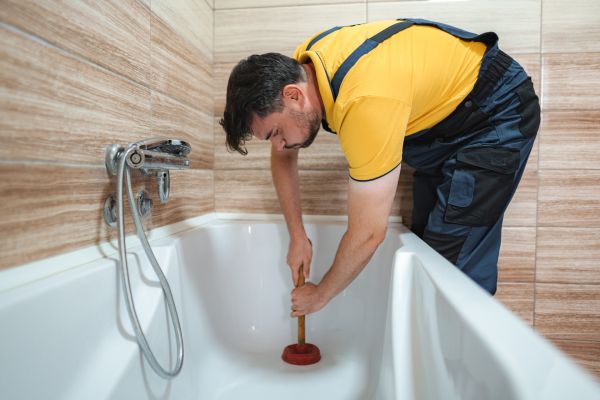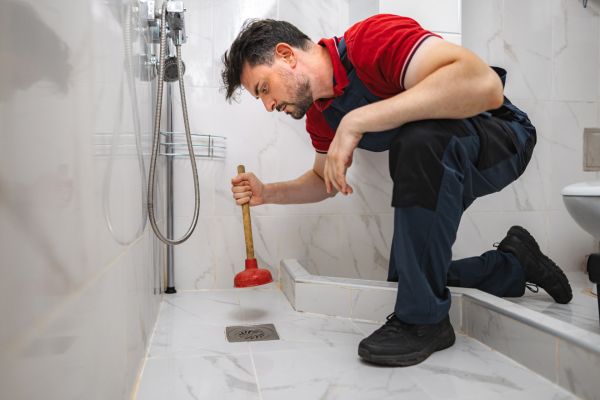Mold can pose a serious health risk and is found in many buildings, including residential homes. Mold can cause allergic reactions in some people. This includes itchy eyes, skin and nose, breathing difficulties, swelling, stuffy sinuses and skin irritations. Studies have also shown that mold can cause asthma in children and other pulmonary problems in healthy people. The black mold Stachybotrys Chartarum is of particular concern because it may be linked to infant acute idiopathic lung hemorhage and other health problems.
Must Read: shower plumbing repair do it yourself tips
It doesn’t matter if you have any of these symptoms, or if you just want to check if your house has mold. Testing for mold is easy. It is much more complicated to treat mold. Black mold testing is a more difficult process. Continue reading to find out how to detect mold in your home.
How to test for mold in 6 Steps
Although mold infestations are easily visible or smelled, they can also be hidden behind walls and under carpets. If you are able to see or smell mold, testing is not necessary. Once that confirmation is received, it is time to contact a professional and start the remediation process. If a medical professional requests it or if the landlord files a lawsuit, testing may be required. If you cannot see or smell mold but have other symptoms, it is worth testing. Follow the instructions on your test kit (more details below), but these are generally what you can expect.
Never Miss: five ways to enhance your house lighting using led lights
Step 1: Perform a visual inspection
First, inspect your home for mold. Mold can be identified by the presence of spots in your home that may appear in many colors. Mold thrives in moisture so be sure to inspect roofs, windows and pipes. Also, pay attention to basements, laundry rooms, bathrooms, crawl spaces, and other previously flooded areas. Mold is most commonly found on fibrous surfaces such as drywall, upholstery and wallpaper, fabrics, cardboard, and paper. Call a professional if you notice any moldy signs.
Step 2: Buy an at-home testing kit
Order an at-home mold test kit if you don’t see any mold, but still want to confirm it. If you are concerned about mold, or if it is affecting your health, you may want to purchase a kit. A test kit can be ordered that includes lab testing, such as the Mold Armor Do It Yourself Mold Test Kit. If you only want to confirm the presence of mold and not care about identification, then the latter option is better.
Step 3: Prepare the medium for growing
A petri dish and a mold growth medium are the most common tools used in test kits. For instructions on how to prepare the petri dish, refer to the product instructions.
Step 4: Collect your samples
A petri dish can be used to collect samples in a variety of ways. First, you can use indoor air quality to collect the sample. This involves laying the dish flat for at least one hour before covering it with the lid. Tape the dish to an HVAC duct, blast the air for ten seconds, and then cover it with the lid. You can also use a swab or a cloth to remove visible mold. This is the best way to remove mold if it is visible.
Step 5: Check your petri dish
Check your petri dishes for mold growth after 48 hours. Wait 24 hours to see if mold is not growing in your petri dish. If mold growth is still not evident, wait another 24 hours before checking again. Your test failed to detect mold growth after 96 hours. You should not remove mold from your test plate if you see it.
Most Popular: why is it so hard to find a good plumber
Step 6: Send your sample to be identified
Follow these instructions to send your sample to the laboratory to be tested. Some test kits include laboratory testing as part of the purchase price. Other kits may require additional fees if you wish to have your samples identified.
You’ll need the products and tools to test your home for mold.
A test kit is all you need to test your home for mold. There are many options, in addition to those already mentioned.
Pro-Lab Mold Testing Kit: This kit contains three tests. For an additional $40, your sample can be tested. Results will be sent via e-mail and/or through the company’s mobile app.
MoldCheck Multi-Test Kit – This kit contains everything you need to run ten tests. It is ideal for monitoring ongoing infestations or cleaning up a whole home. There is no laboratory testing option so you will have to identify yourself.
This kit contains eight test kits for ImmunoLytics Mold Testing. Each plate can be tested at $33 each
My Mold Detective: This reusable air sampling pump collects samples in five minutes and is an advanced option for mold monitoring. Each of the four cassettes can be used to test for mold in a laboratory and cost $35 each.
My Mold Detective Additional Samples – The My Mold Detective can also be used repeatedly, so order as many as you need to monitor your mold problem.
Are you averse to chemicals? Here are some natural ways to check for mold in your house
Do not be concerned about harmful chemicals being used to test for mold in your home. Mold testing doesn’t require any chemicals and the kits are non-toxic.
Also Read: how to know you chose a professional plumber
The mold itself is what you need to be concerned about when testing for mold. To reduce mold exposure, use gloves and a mask if you collect direct mold samples using the swab method.


